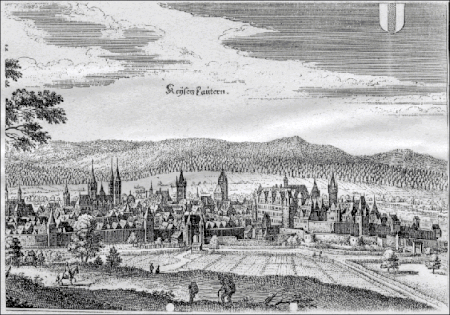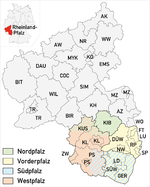Battle of Kaiserslautern

The Battle of Kaiserslautern (28–30 November 1793) saw a Coalition army under Charles William Ferdinand, Duke of Brunswick-Wolfenbüttel oppose a Republican French army led by Lazare Hoche. Three days of conflict resulted in a victory by the Prussians and their Electoral Saxon allies as they turned back repeated French attacks. The War of the First Coalition combat was fought near the city of Kaiserslautern in the modern-day state of Rhineland-Palatinate, Germany, which is located about 60 kilometres (37 mi) west of Mannheim. In the First Battle of Wissembourg, the Coalition army of Dagobert Sigmund von Wurmser broke through the frontier defenses and drove the French Army of the Rhine south to Strasbourg. In response to this crisis, the French government appointed Hoche to command the Army of the Moselle and Jean-Charles Pichegru to lead the Army of the Rhine, while urging them to relieve the siege of Landau. In November, Hoche launched an offensive which pressed back the Duke of Brunswick's army to Kaiserslautern. On 28 November, French troops moved on Brunswick's defenses from the north, northwest and west, but for two days the Coalition army fended off the piecemeal attacks of their adversaries. Hoche finally got his entire army into action on the 30th, but the professional Prussian soldiers proved more than a match for the enthusiastic but indifferently-trained French. After the setback, Hoche changed his strategy and turned a large part of his army against Wurmser's exposed western flank in Alsace. The next engagement was the Battle of Froeschwiller in December.
Excerpt from the Wikipedia article Battle of Kaiserslautern (License: CC BY-SA 3.0, Authors, Images).Battle of Kaiserslautern
Am Glockenturm, Kaiserslautern Galappmühle
Geographical coordinates (GPS) Address Nearby Places Show on map
Geographical coordinates (GPS)
| Latitude | Longitude |
|---|---|
| N 49.470277777778 ° | E 7.7636111111111 ° |
Address
Am Glockenturm 17
67659 Kaiserslautern, Galappmühle
Rhineland-Palatinate, Germany
Open on Google Maps






